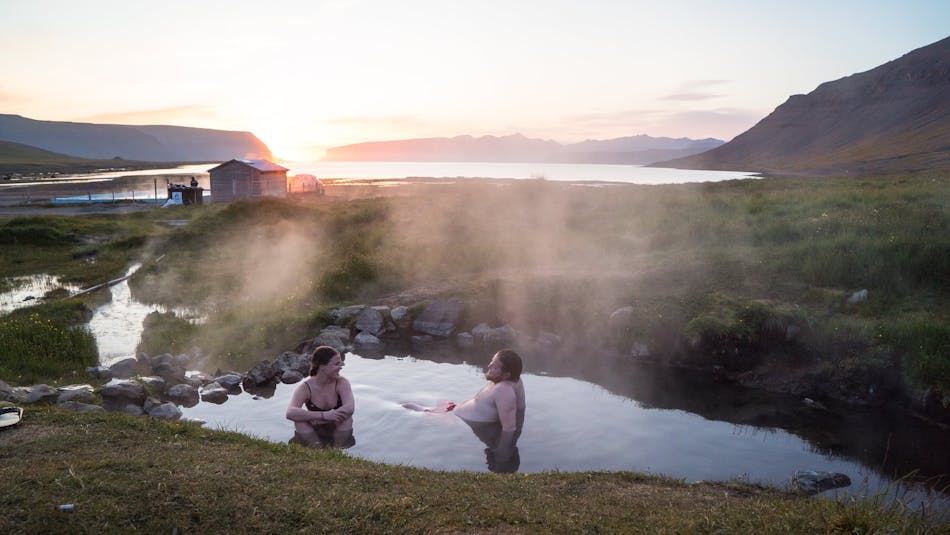
A warm riverbed by Reykjafjarðarlaug, some 23km southeast of Bíldudalur, with a view over Arnarfjörður. Photo by Haukur Sigurðsson
A warm riverbed by Reykjafjarðarlaug, some 23km southeast of Bíldudalur, with a view over Arnarfjörður. Photo by Haukur Sigurðsson